Singapore (May 2023)
Spotted keelback (Xenochrophis maculatus)
When we visited Singapore back in 2014, we had a chance to explore the most iconic tourist attractions which is why this time we decided to focus entirely on the wildlife. We managed to see a decent number of species over 2 days and 2 nights. Let’s begin with the herps!
HERPS - SNAKES, LIZARDS, FROGS
Mangrove pit vipers (Trimeresurus purpureomaculatus) were high on our Singapore wishlist and we managed to see a few of them in the mangrove area thanks to our new friend! One of the well known vipers there is known as Blu - a large, uniquely coloured female that is regularly spotted and admired by locals and visitors alike (first photo above and below). One of the other mangrove pit vipers we also saw was rusty-coloured (second photo above and below). It was nice to see different colour morphs in this species over one night.
We also wanted to photograph Wagler’s pit vipers (Tropidolaemus wagleri) in their natural environment. They seem to be rather static and tend to stay in one area for longer periods of time, so thanks to some intel and Daryl’s eagle eyes we had the pleasure to encounter the lovely large female below (she was just before shed).
We also saw two younger individuals, hiding in plain sight on a hot day.
Our other encounters included an oriental whip snake (Ahaetulla prasina), a snake species known for its unique quick and graceful movement through the trees, often resembling the movement of a whip; striped kukri snake (Oligodon octolineatus), easily recognizable for its eight black dorsal stripes on a brownish-gray background; pink-headed reed snake (Calamaria schlegeli), a fossorial species spending much of its time burrowing underground; a Southeast Asian bockadam or dog-faced water snake (Cerberus schneiderii), which emerges in great numbers at night during low tide to feed on fish and invertebrates and spotted keelback (Xenochrophis maculatus) at the top of this page, a diurnal species that likes shallow streams and swampy areas, where it hunts for frogs.
During our walks, we encountered quite a few flying lizards (like the five-lined flying dragon - Draco quinquefasciatus -below) and monitor lizards (like the clouded monitor lizard - Varanus nebulosus - below). We wish monitor lizards were so common in Hong Kong, where we’re currently based!
Frogs weren’t our focus this time and most we have seen are already known to us from other locations in Asia but we did get a few shots of species we don’t see in Hong Kong.
Mukhlesur’s narrow-mouthed frog (Microhyla mukhlesuri)
MAMMALS AND BIRDS
We arrived to Singapore right after midnight and headed straight to the jungle. On that first night, we encountered a whole plethora of mammals, one of them being the lesser mouse-deer (Tragulus kanchil), measuring a head-body length of less than 50 cm. It lives on the floor of primary and secondary forests feeding on leaves, shoots, fruits and sometimes fungi. It is mainly crepuscular (i.e. active early morning and late afternoon). We thought they were rather uncommon but it turns out not really - we saw a few in one night.
Lesser mouse-deer (Tragulus kanchil)
Another exciting mammal we saw was a Sunda colugo (Galeopterus variegatus). These peculiar animals eat leaves and young shoots. During the day, colugos rest mainly on tree trunks. At dusk they become active, gliding from tree to tree to feed.
In Singapore this species has proven itself to be adaptable to fragmented forests in semi-urban settings; it makes use of tree plantings next to major roads and other linear plantings to navigate between fragments of habitat. It has been observed gliding across 6-lane highways, if the median divider supports mature trees.
Source: Click
Sunda colugo (Galeopterus variegatus)
Gardens by the Bay, which we visited right before our departure, turned out to be a great spot for olive-backed sunbirds (Cinnyris jugularis) and red junglefowls (Gallus gallus).
A pair of gorgeous greater racket-tailed drongos (Dicrurus paradiseus), medium-sized birds with elongated outer tail feathers with webbing restricted to the tips, also made their appearance in one of the parks; on one of our night walks, we spotted a cute buffy fish owl (Ketupa ketupu) too - it seemed to be used to human presence and let us get pretty close.
INVERTEBRATES
Last but not least - invertebrates. Yongi and Felix kindly took us on nature walks on our first day and showed us the beauty and wonders of wild Singapore!
We saw a variety of jumping spider species, including but not limited to (in order of photos below): Chrysilla lauta, Cosmophasis thalassina, Epeus flavobilineatus, Hyllus diardi, Hyllus keratodes, Junxattus daiqini, Orsima ichneumon, Pancorius thorelli, Ptocasius weyersi, Pystira ephippigera, Rhene sp., Stergusa sp., Telamonia dimidiata, Thorelliola ensifera, Toxeus maxillosus, Viciria pavesii.
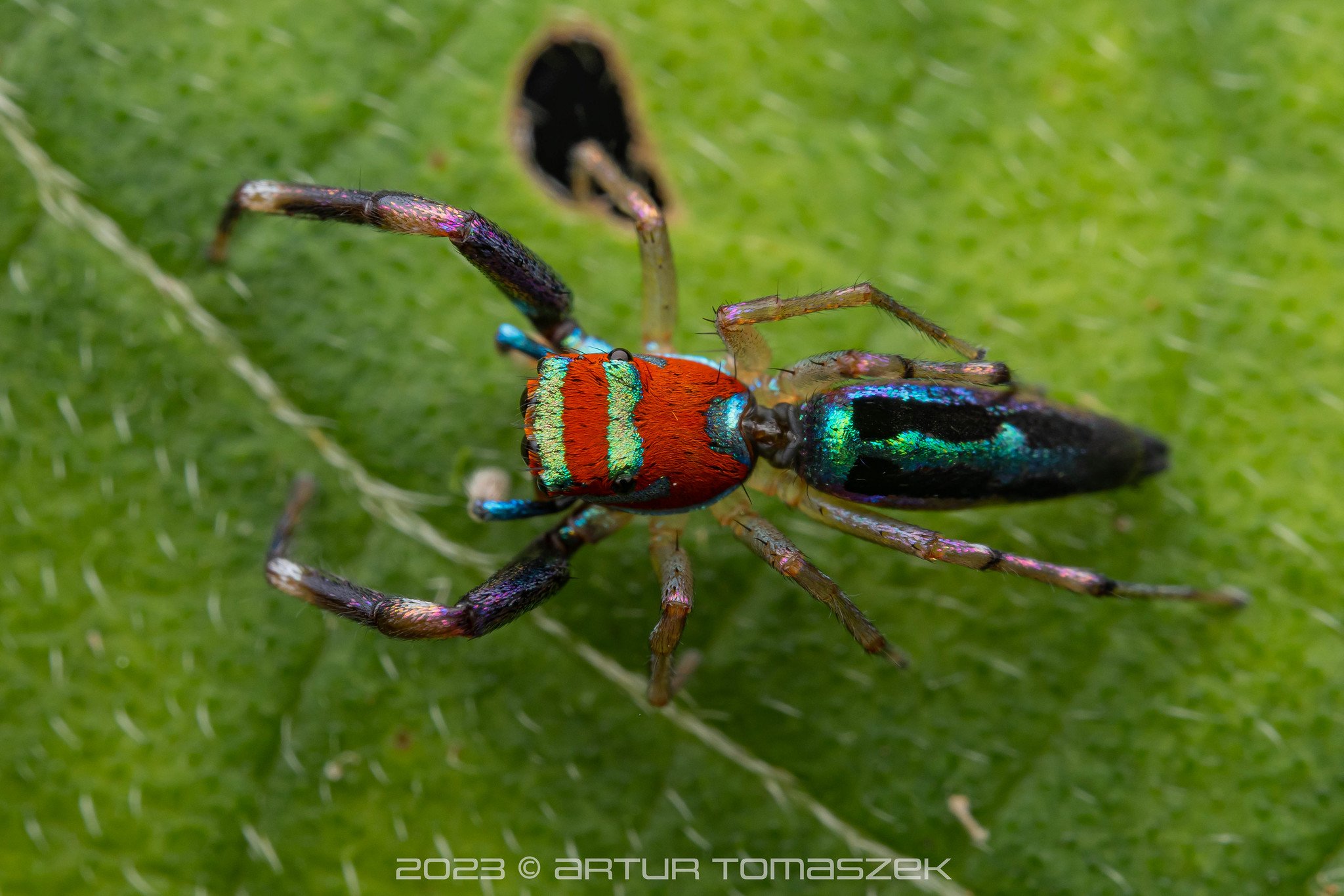
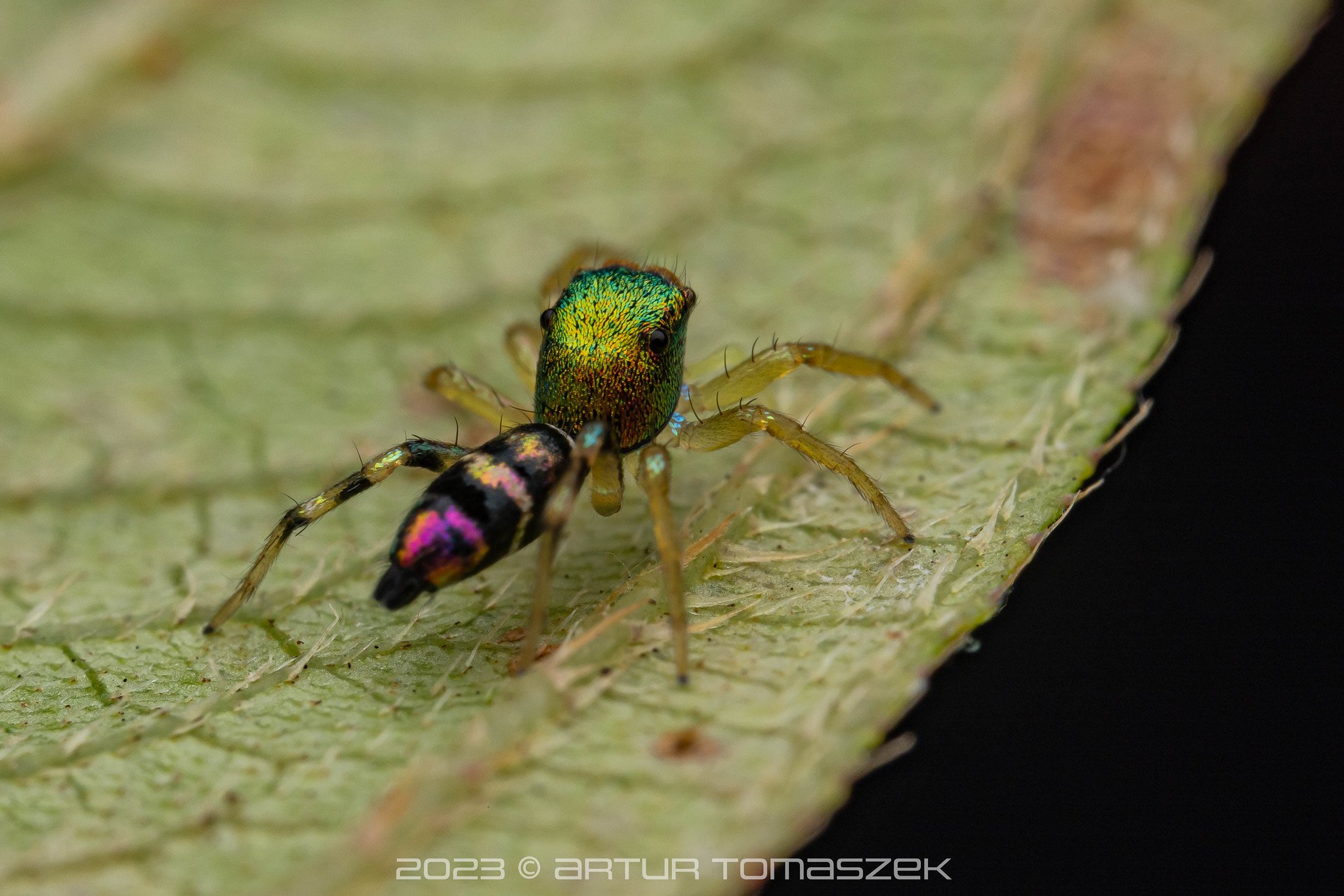
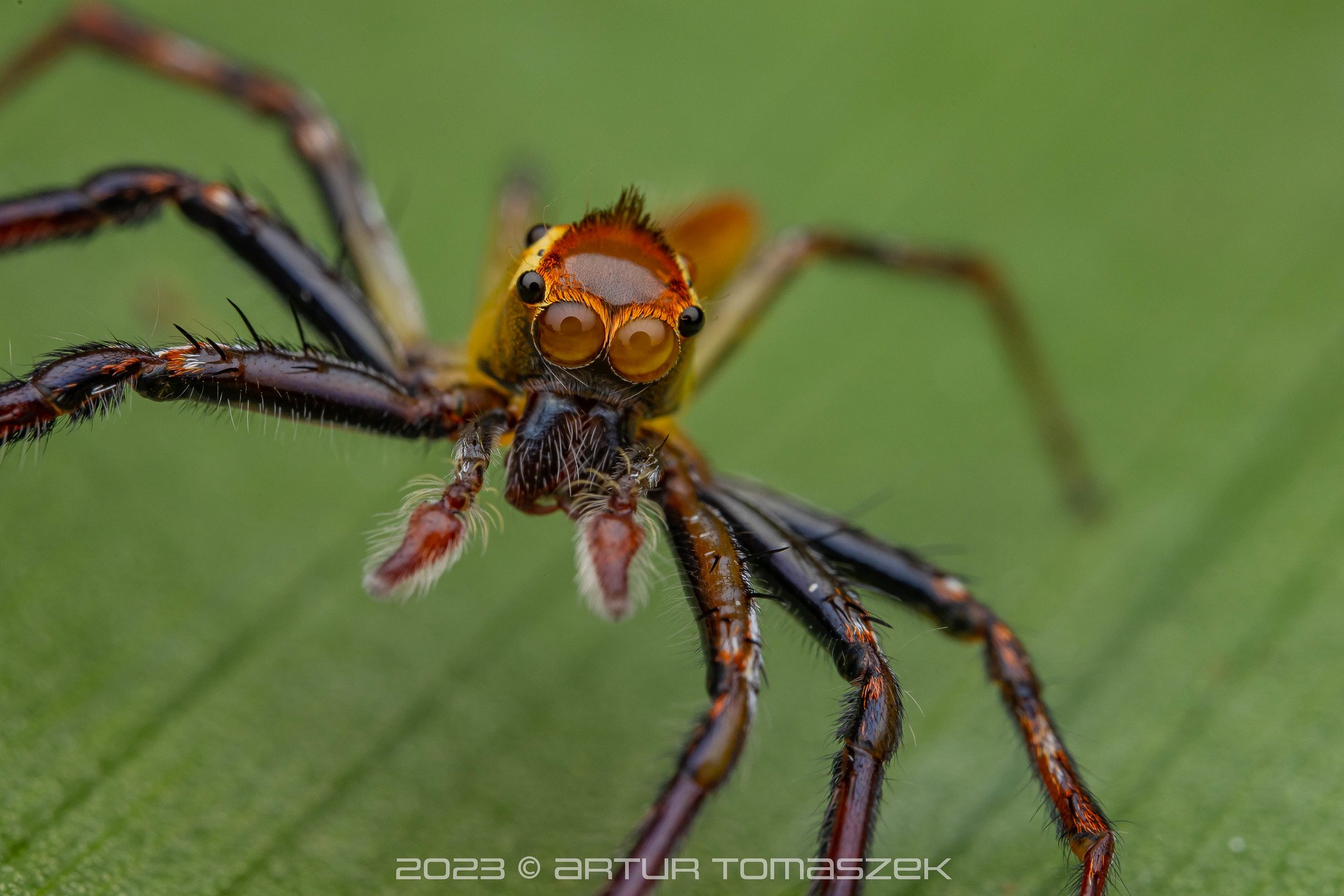
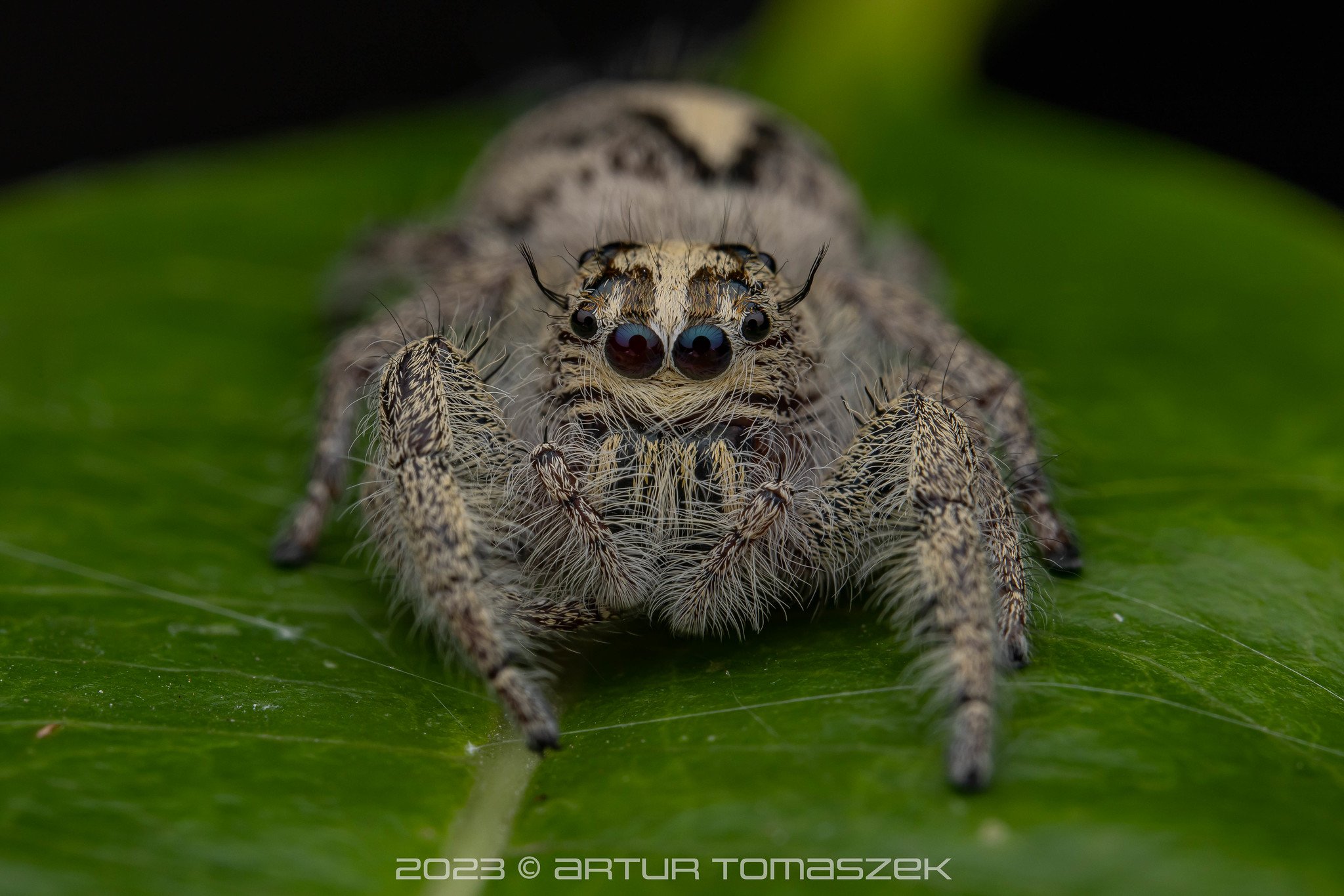
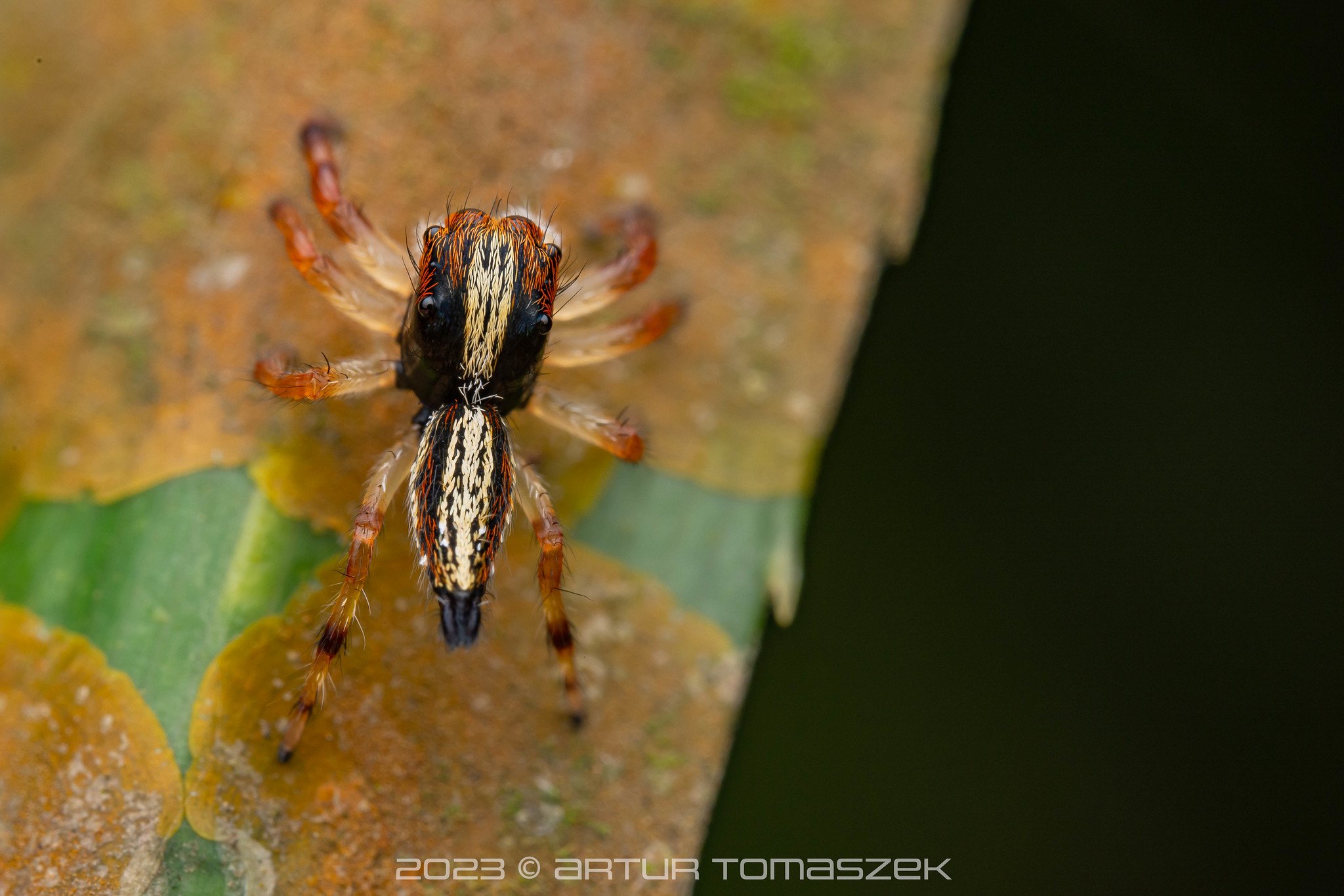
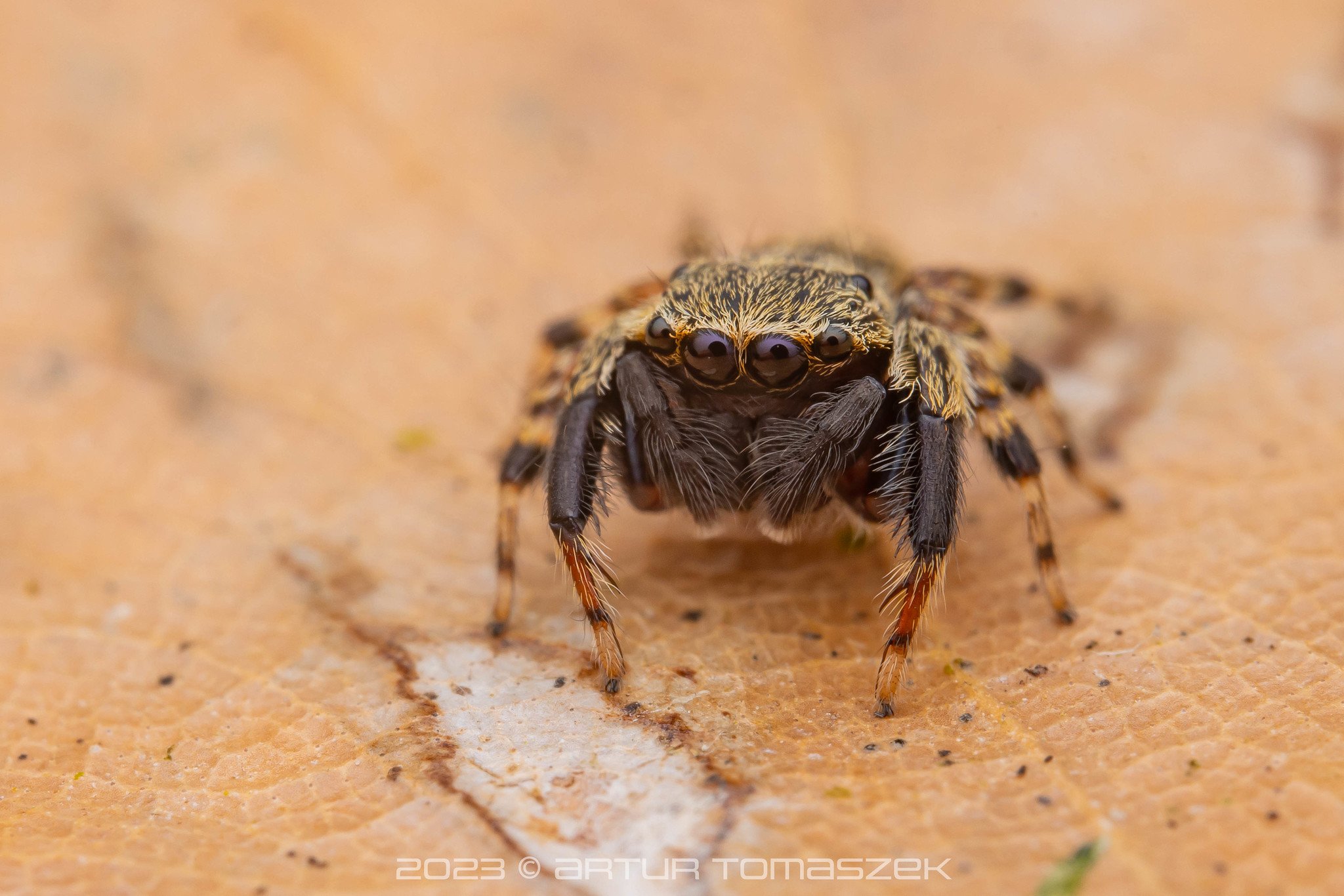

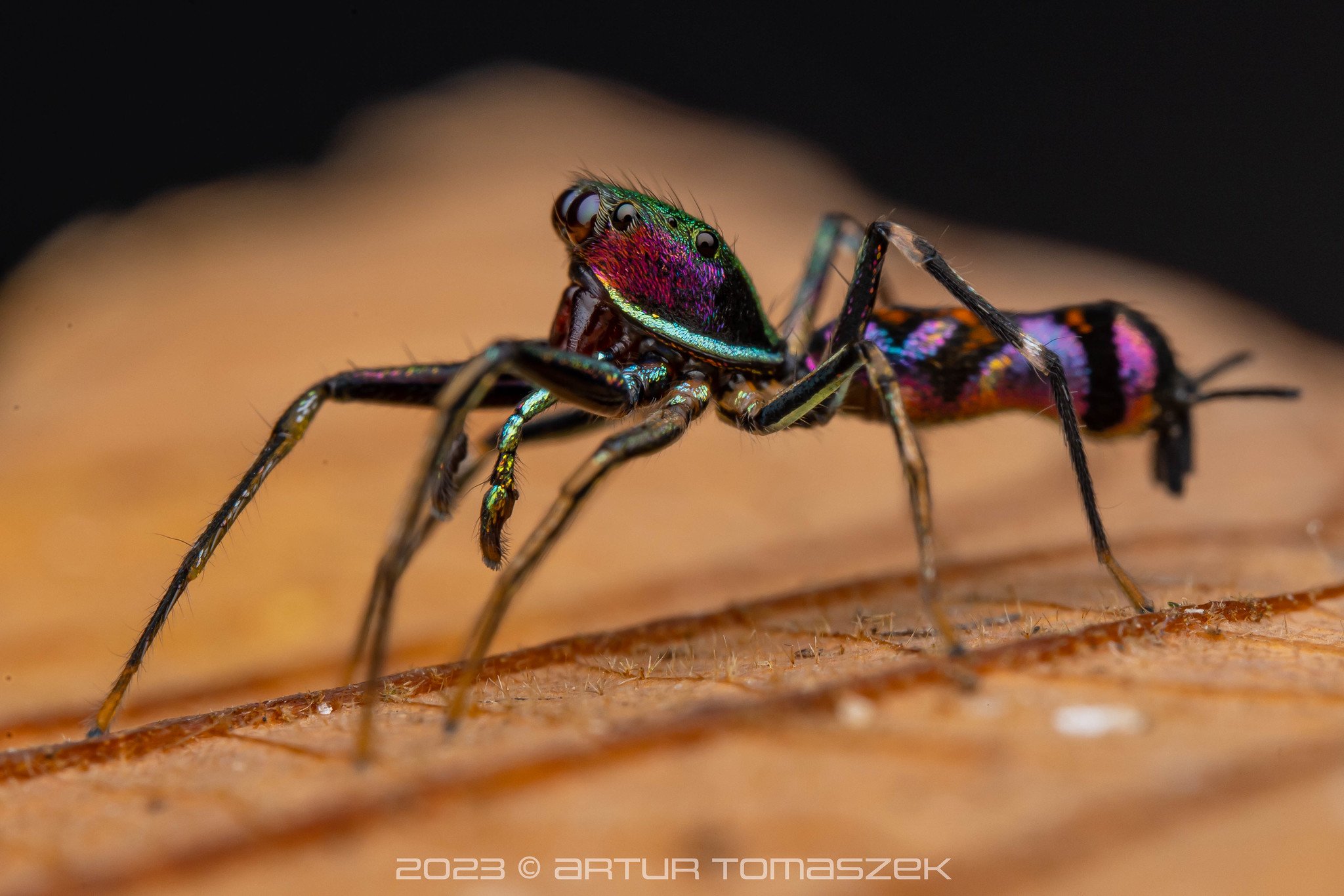
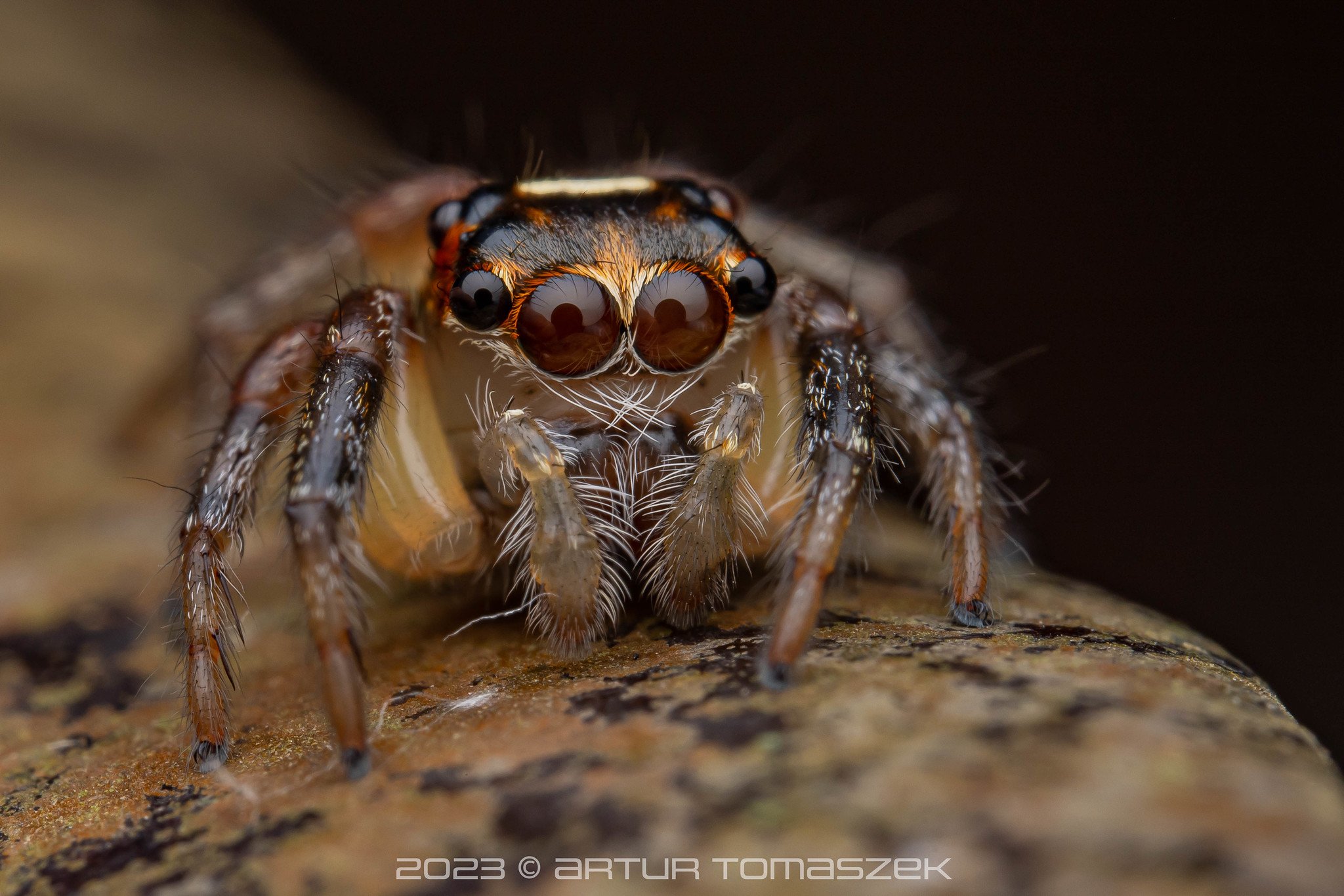
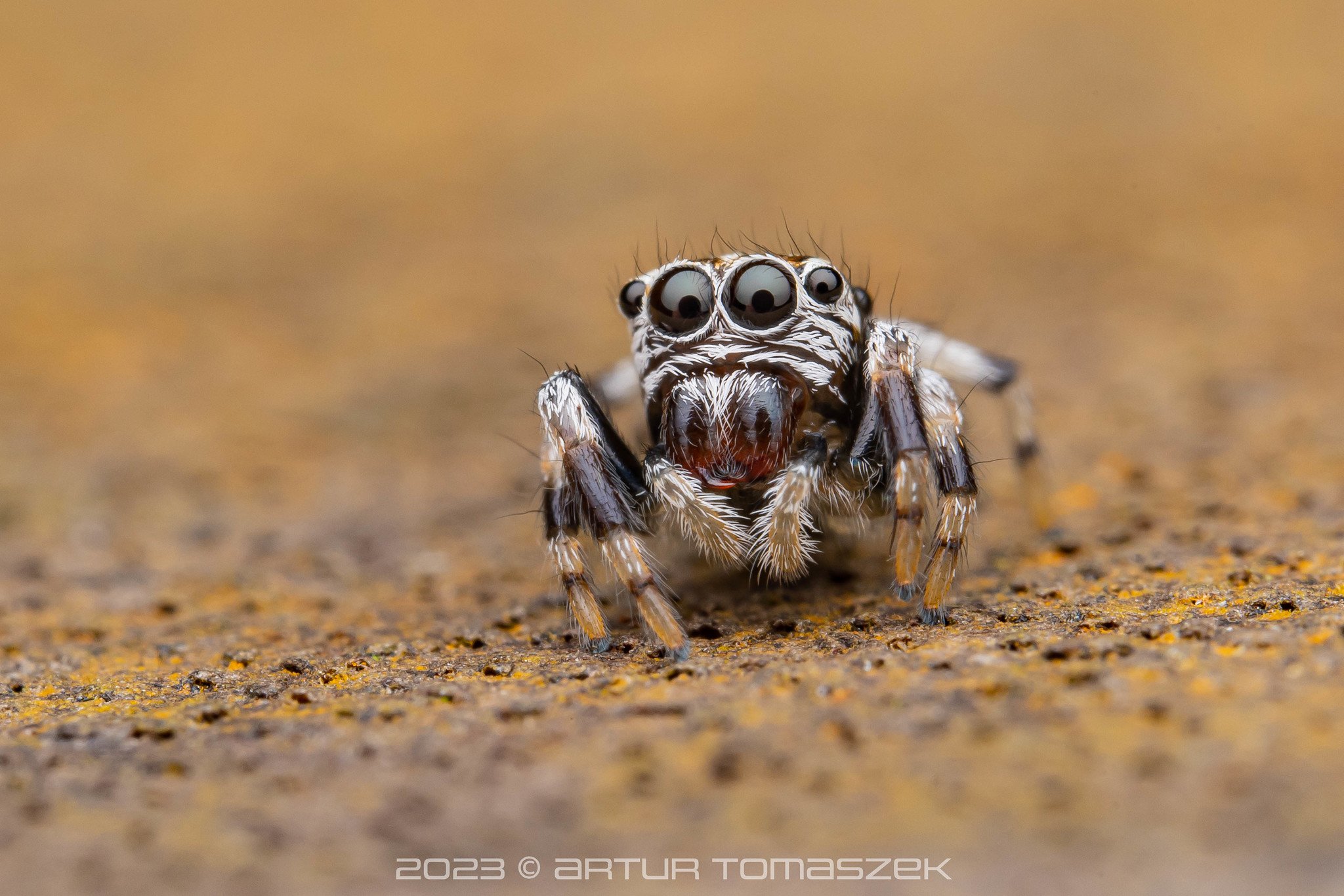
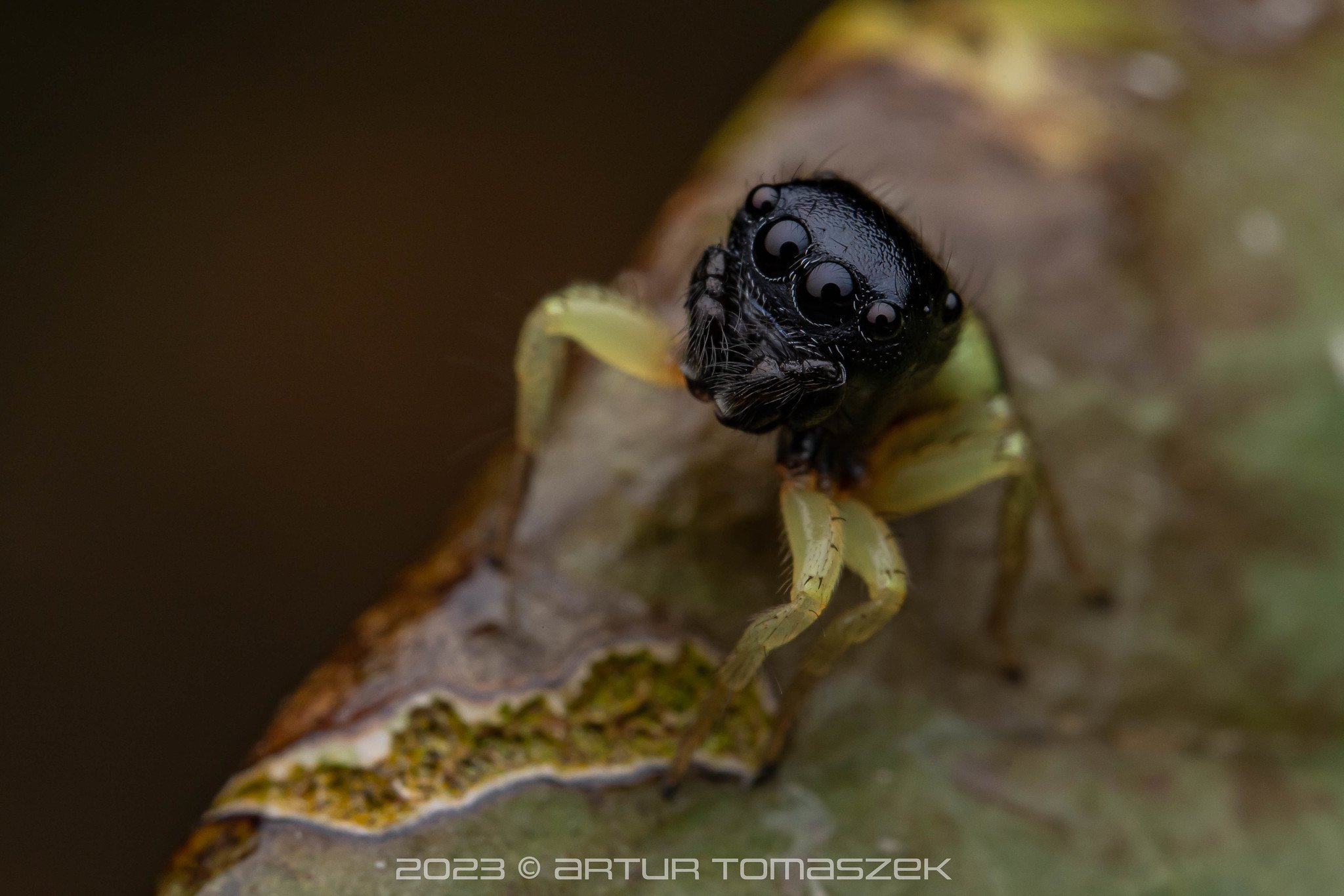
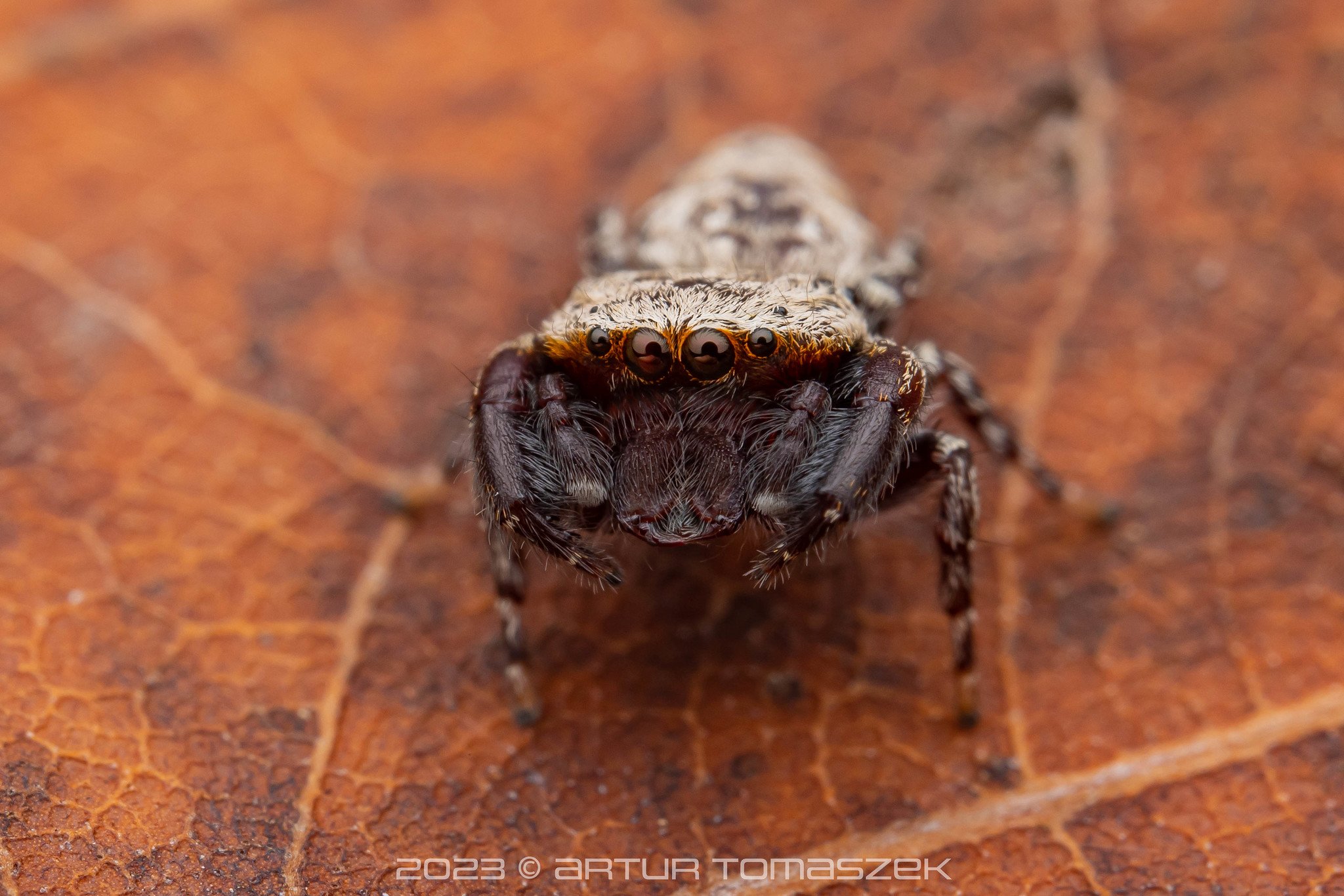
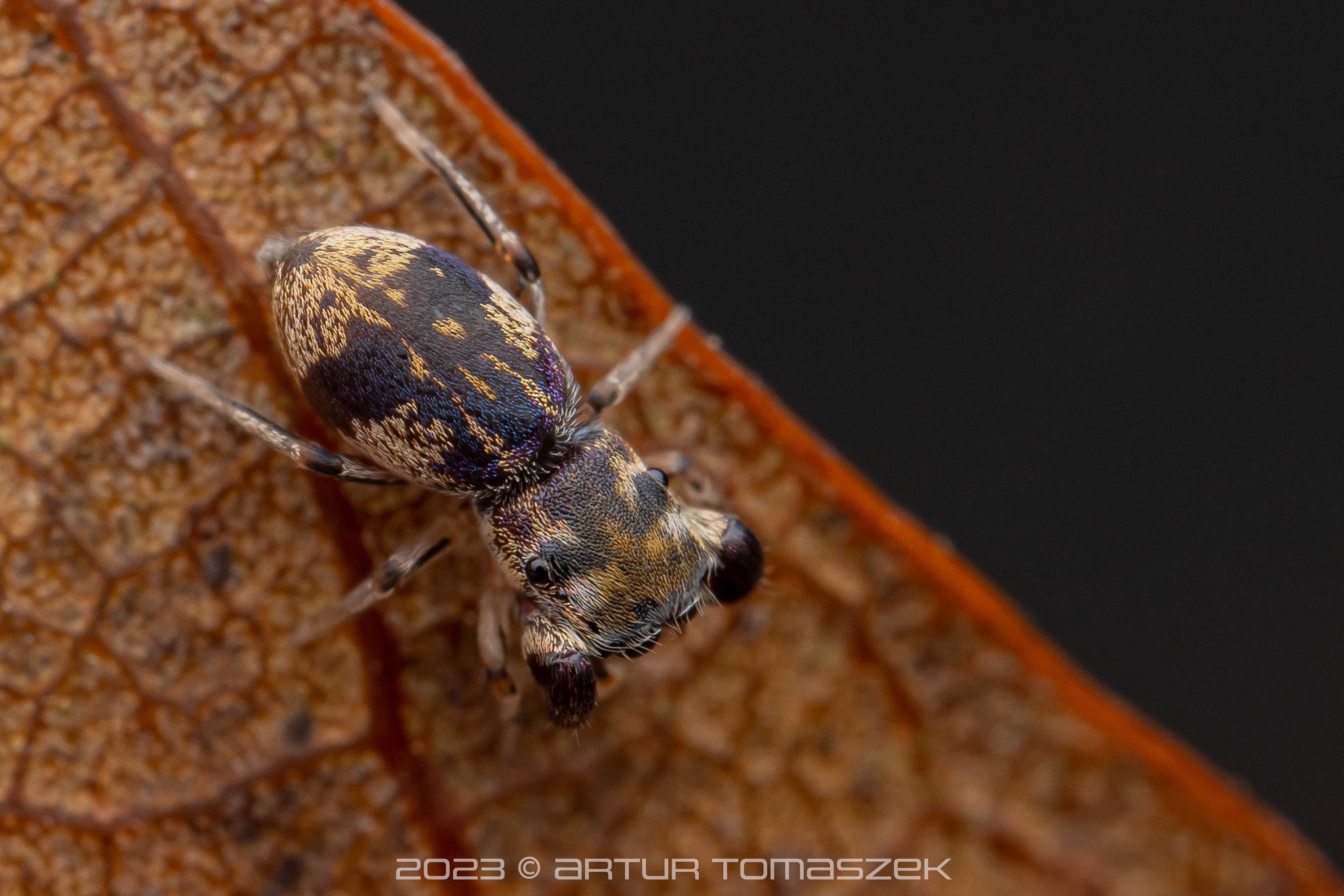
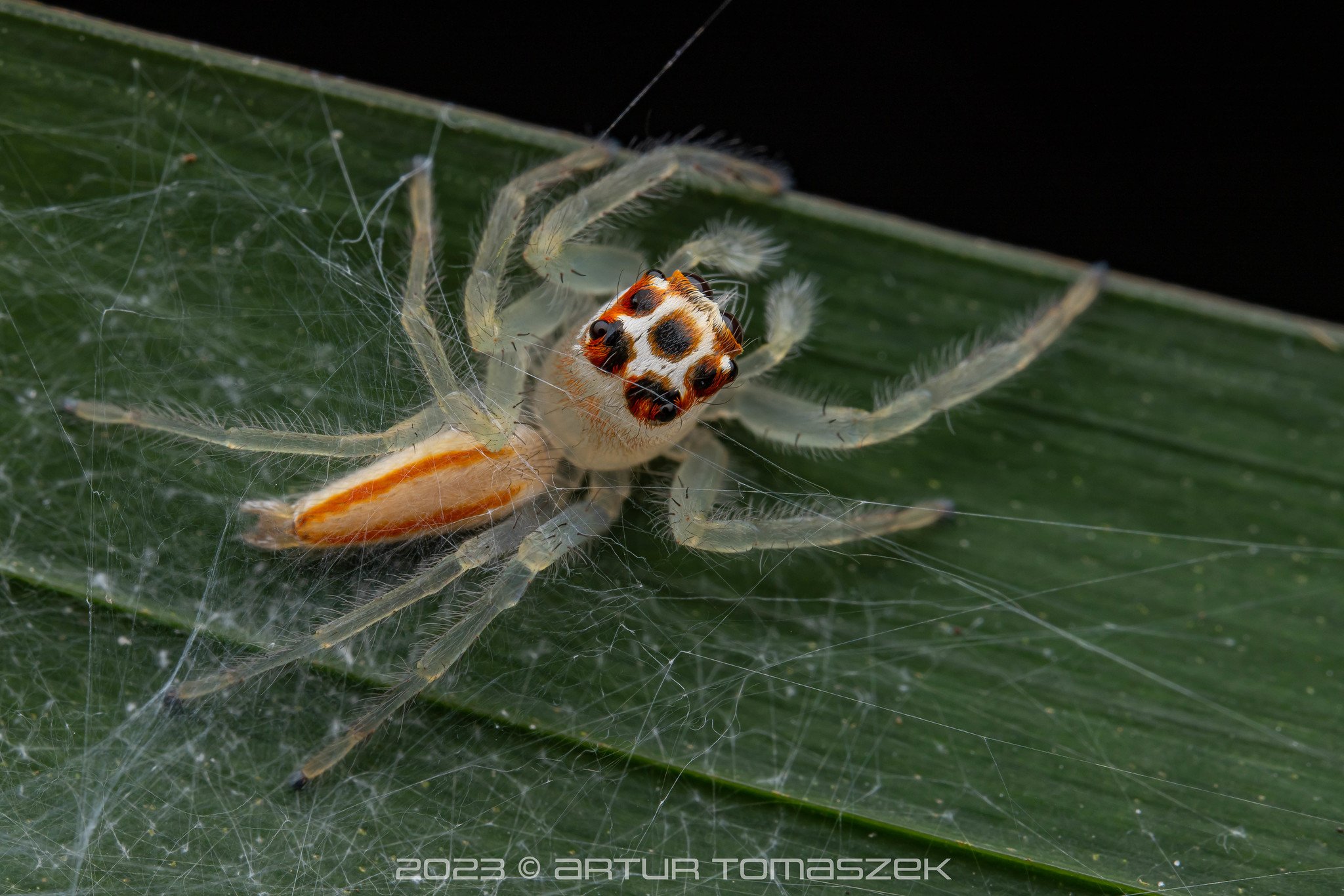
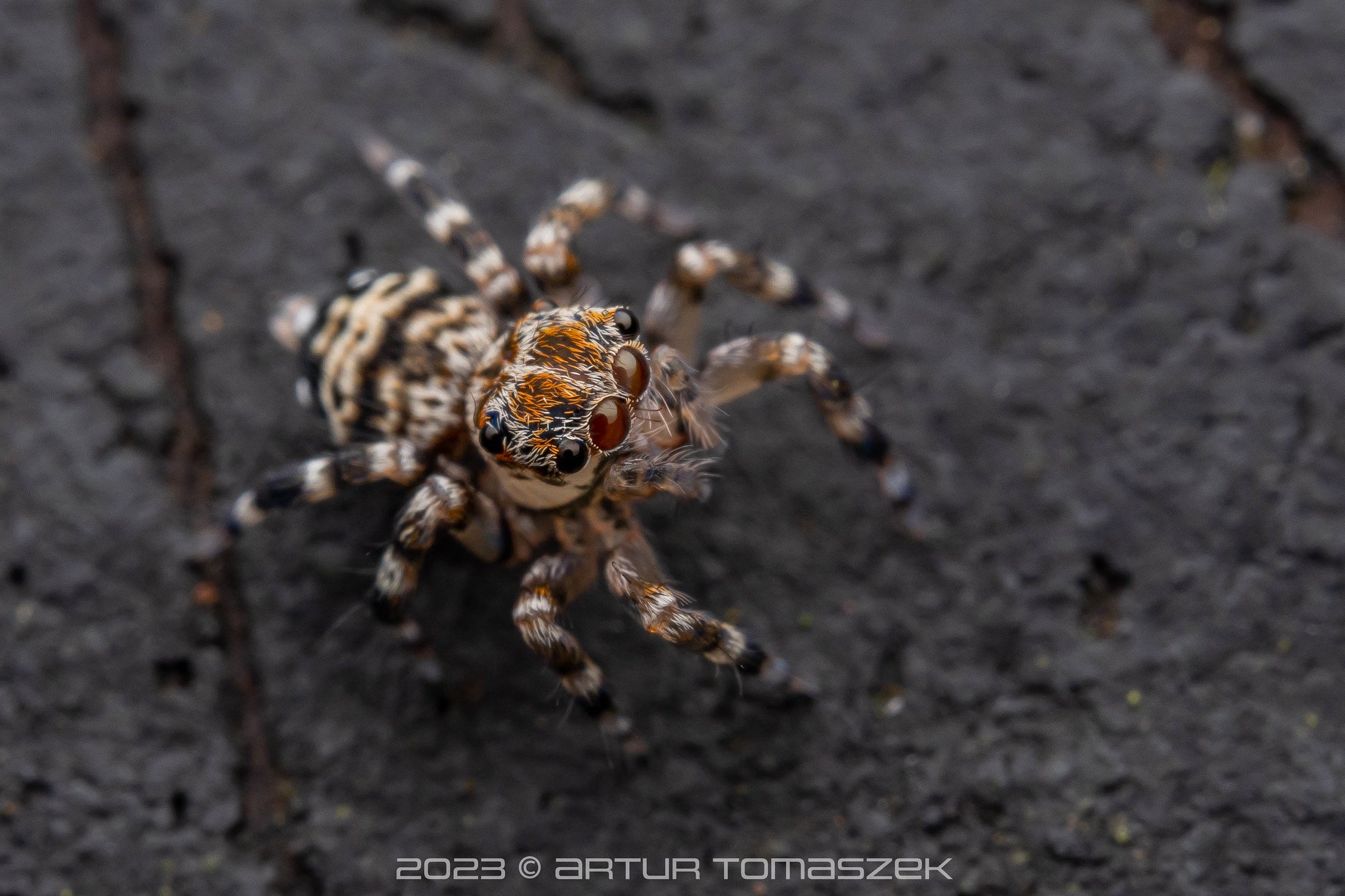

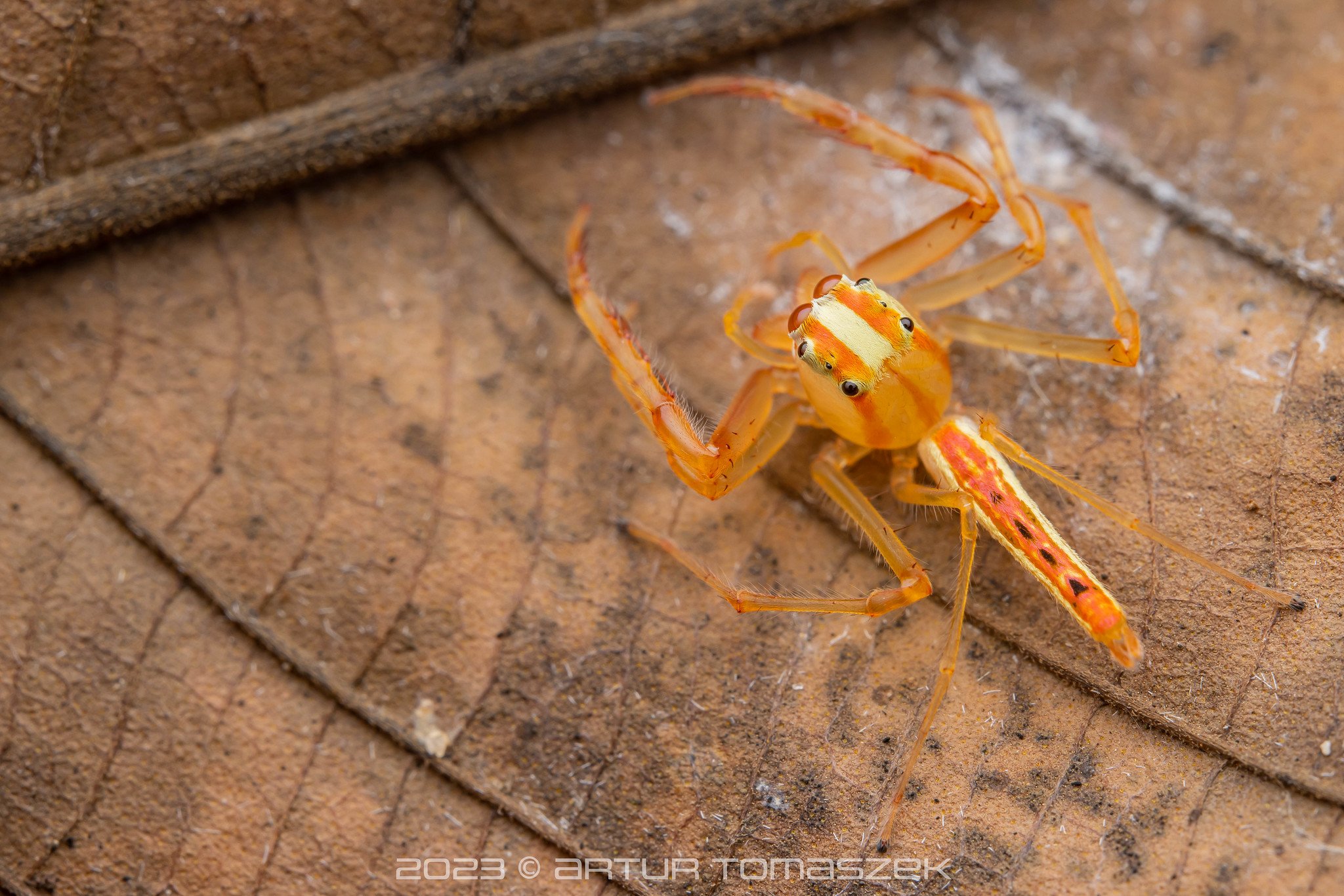
We were also really pleased to see the eight-spotted crab spider (Platythomisus octomaculatus), a truly unique and surreal spider species.
Eight-spotted crab spider (Platythomisus octomaculatus). Not only weird-looking but also special when it comes to the way it moves!
David Bowie spider (Heteropoda davidbowie)
A not-so-rare (but rather elusive for us in the recent years) spider that we encountered this time in Singapore was the lovely Heteropoda davidbowie above. It’s a species of spider named after the late David Bowie. It’s also commonly known as the "huntsman spider" and can grow up to six inches in size.
Crab spider (cf. Tarrocanus sp.)
A giant orb weaver spider (Nephila kuhli)
Artur was also quite excited about the many scorpions we saw on the trees and on the ground in one of the forests.
Singapore bark scorpion (Lychas scutilus) - a female with her offspring
A snail (Amphidromus atricallosus) and a hammerhead worm (Bipaliinae)
A planthopper (Fulgoroidea)
Branded imperial (Eooxylides tharis) and scarlet flash (Rapala dieneces)
Moths: Saptha beryllitis and Westermannia sp.
A shout-out to Yongi Ng, Felix Lim and Daryl Tan for showing us around, giving advice and being perfect hosts!
With Yongi and Felix :)


































